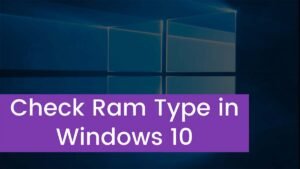Research reveals there are 8,945 different types of programming languages – no wonder choosing the right one might seem like a strenuous task.
So, if you’re anxious to jump into the world of programming but don’t know where to start, the following tips will assist you in selecting the perfect programming language to kickstart your coding adventure.
1. Define Your Goals and Projects
As you start to explore the world of programming languages, it’s a good idea to begin by defining your goals and the types of projects you’d like to work on, such as:
- Web development.
- Mobile app creation.
- Data analysis.
- Game design.
For reference, a basic Python developer earns between $70,000 to $100,000 a year, but that’s just one of many avenues available to you. By identifying your interests and ambitions, you can narrow down the wide range of platforms to choose from.
2. Consider Your Background
Your prior experience may shape the way and help determine which language to learn – if you already know programming concepts, you can leverage languages that align with your existing skills.
But if you’re new to coding, check out beginner-friendly languages like Python or JavaScript, which offer intuitive syntax and extensive learning resources when first starting.
3. Community and Resources
JavaScript is one of the most popular programming languages worldwide, with 67.7% of developers using it.
When making a selection, don’t forget to also consider the community and their individual benefits. Search for active communities that:
- Offer sources of support and inspiration.
- Provide opportunities to seek help, share your progress, and collaborate on projects.
- Host online tutorials, forums, and discussions.
- Open-source projects to accelerate your learning journey.
4. Job Market and Opportunities
While we all want to choose a programming language we’re interested in, it’s also wise to consider the job market and industry demand.
It is estimated that by 2028, the number of software development jobs in the U.S. will grow by 21% compared to 2018.
Research which languages are in demand in the field that interests you, as some offer more opportunity than others. A few popular languages with an abundance of versatility include:
- Java;
- Python;
- JavaScript.
5. Learning Curve and Complexity
Choose a language that matches your learning pace and patience. Some, like Python, are known for their simplicity, making them ideal for beginners.
While others, like C++, are better suited for those seeking a challenge and are willing to tackle a steeper learning curve.
6. Project Showcase and Portfolio
Show off your programming skills to potential employers or collaborators by building a portfolio.
When selecting a language, consider whether it allows you to create a diverse range of projects or not.
A well-rounded portfolio showcases your ability to tackle various tasks and showcases your versatility as a programmer.
Remember to encrypt your internet traffic by adding an extra layer of privacy and security. With a VPN on iPhone, you can explore the programming world with the assurance that your online activities are protected.
7. Future-Proofing
Programming languages evolve over time, and it’s essential to choose one with a strong track record and ongoing development.
Opt for languages that have been widely adopted and have a supportive community that actively contributes to their growth.
Steer clear of overly niche languages that might have limited applications in the future.
8. Interoperability and Integration
In some cases, using multiple programming languages together can be advantageous. For example, you might pair SQL with Python for data analysis.
If interoperability and integration are important to you, research which languages work well together and can seamlessly communicate to fulfill your project requirements.
9. Experiment and Explore
Feeling overwhelmed?
It’s completely fine to not be sure where to start. In fact, we recommend you experiment with multiple different languages on small projects to get a feel for each of their strengths and weaknesses.
Remember, choosing a programming language isn’t a one-time decision.
Learning multiple languages enhances your problem-solving abilities and broadens your skill set, making you a more versatile programmer.
10. Personal Interest
Ultimately, we encourage you to follow your personal interests and passions. It is, after all, the most powerful motivator for sustained learning.
If a specific domain or technology excites you, pursue it wholeheartedly.
The learning process becomes more enjoyable and fulfilling when you’re genuinely enthusiastic about the projects you’re working on.
Conclusion
Selecting a programming language is a significant decision, but it doesn’t have to be overwhelming (or permanent).
Experiment with different languages as you continue the learning process. Start by defining your goals, considering your background, and tapping into the power of community support.
Think about future prospects, possible learning curves, and personal interests when determining where to start. Your coding journey is an adventure unique to you, so embark on it with confidence and curiosity, and before you know it, you’ll be writing code in the language that perfectly aligns with your aspirations.

![You are currently viewing How To Pick A Programming Language To Learn? [Top 10 Tips]](https://wuschools.com/wp-content/uploads/2023/09/Pick-A-Programming-Language-To-Learn.jpg)


